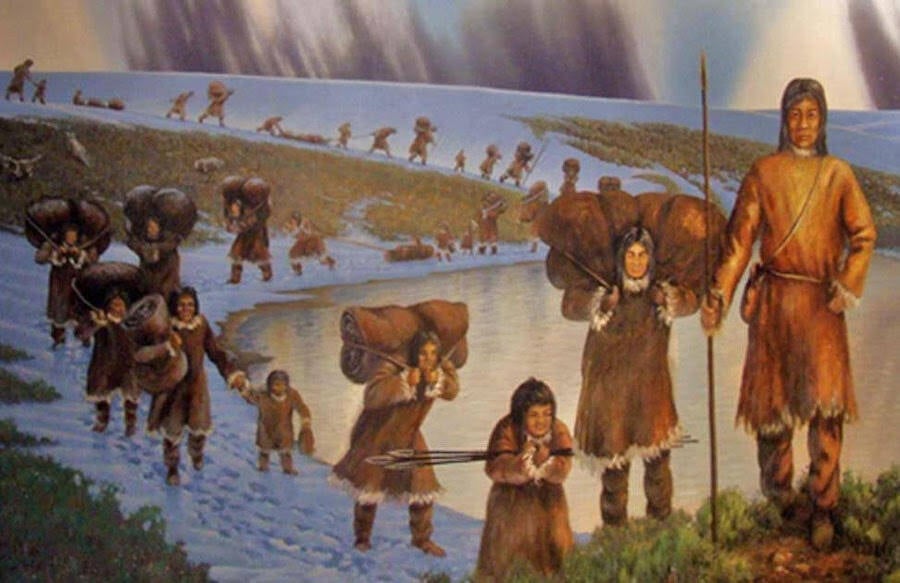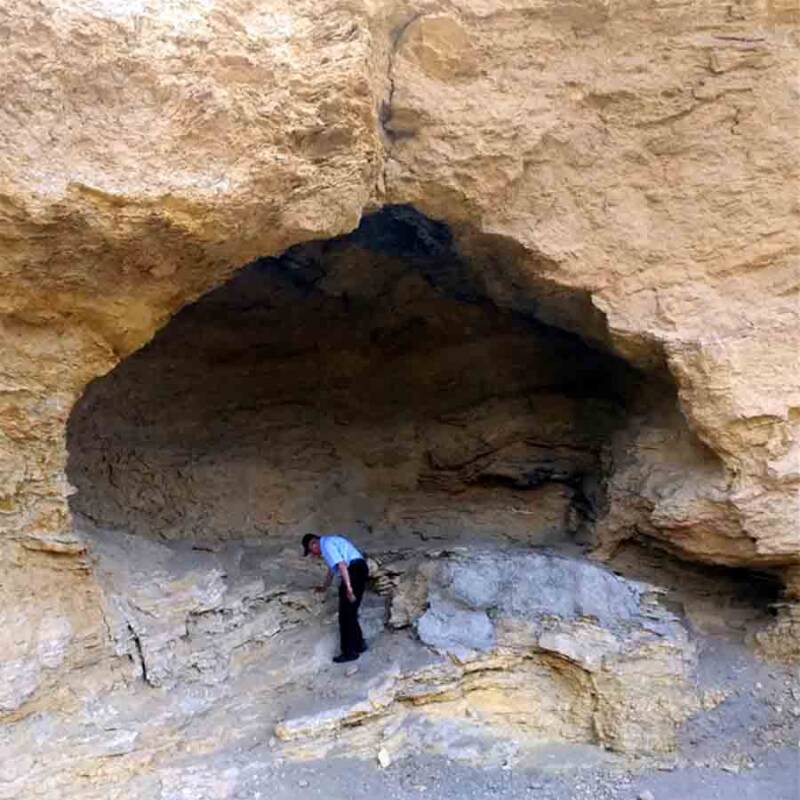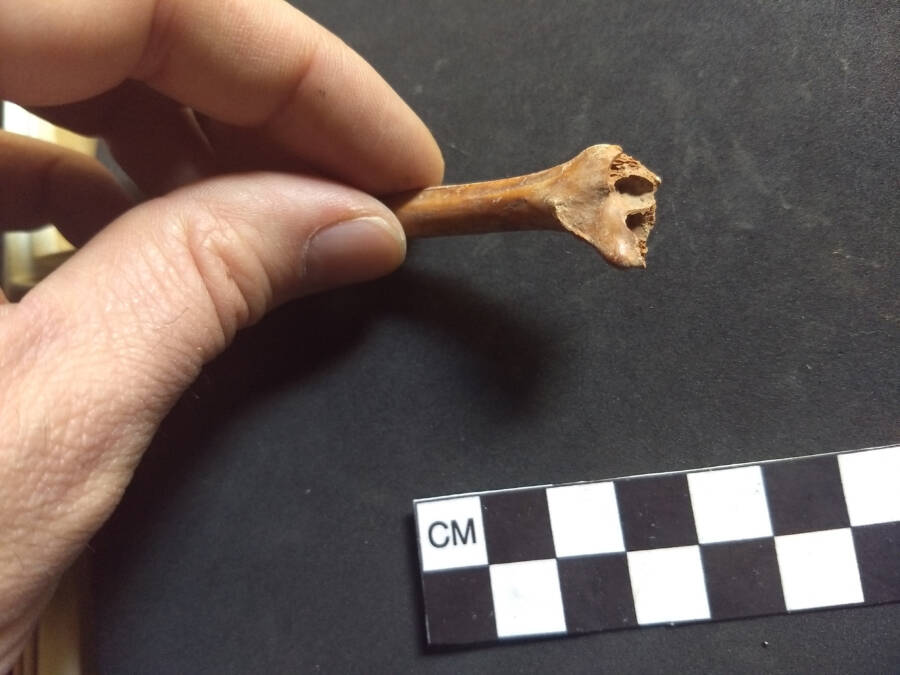Researchers dated a set of animal bones found in Coxcatlán Cave to around 30,000 years ago — completely upending previous estimates of when humans first arrived in the Americas.

Page MuseumRadiocarbon-dating of a set of bones found in a cave used by early man might suggest humans arrived in America 20,000 years earlier than believed, long before the migration across the Bering Land Bridge.
Until recently, it was widely believed that the first humans settled in America after crossing the Bering Land Bridge from Asia about 10,000 years ago. But a new study out of Mexico this week shatters that hypothesis.
Indeed, a team of anthropologists from Iowa State University now believe that humans arrived in America 30,000 years ago — and did so by sea.

Iowa State UniversityCoxcatlán Cave in Mexico is believed to have once been habited by early man.
Anthropologists were studying the origins of farming in the Tehuacán Valley of Mexico, where early humans first began experimenting with agriculture. Several domesticated plants have been found there in previous studies, including the bones of animals believed to have been hunted by early man, which were found back in the 1960s.
The bones were originally found in Coxcatlán Cave, which was once occupied by humans, and in the deepest layer of excavation, which suggests that they were left there when the cave was first inhabited. After radiocarbon-dating the samples, the researchers learned that the bones were between 33,448 and 28,279 years old.
“We were just trying to situate our agricultural study with a firmer timeline,” Iowa State anthropologist Andrew Somerville said. “We were surprised to find these really old dates at the bottom of the cave, and it means that we need to take a closer look at the artifacts recovered from those levels.”

Iowa State UniversityFirst discovered in the 1960s, the bones had not been radiocarbon-dated until recently.
Previous studies dated only plant and charcoal remains which, according to Somerville, provide a far less accurate age than bones. Somerville added that even though previous studies had not dated the artifacts found at the bottommost layer of the cave, he never anticipated that they would be this old.
Though anthropologists believed the bones were the remains of a human feast, more evidence is needed to prove that. Somerville said the kind of evidence he and other researchers will be looking for includes cut marks in the bones as well as evidence that they have been boiled or held over a fire in order to indicate whether they were handled by humans.
Somerville added that they will also be looking for the presence of stone tools. Although stone fragments have been found in the deepest layer of the cave in the past, it is still unclear whether they were once used as tools or are simply broken pieces of rock.
“If we can find strong evidence that humans did in fact make and use these tools, that’s another way we can move forward,” Somerville concluded.
And if all that evidence suggests that humans were, in fact, settled in that Mexican cave up to 33,000 years ago, then that means they could not have possibly arrived on the continent by land.

National Park ServiceA map of the Beringia Land Bridge about 15,000 years ago.
That is because the Bering Land Bridge was inaccessible up until about 15,000 years ago. Before that, it was covered in Ice Age glaciers, which then melted and submerged the land until the waters receded enough for humans to cross it on foot.
“Pushing the arrival of humans in North America back to over 30,000 years ago would mean that humans were already in North America prior to the period of the Last Glacial Maximum, when the Ice Age was at its absolute worst,” Somerville elaborated. “The glaciers would have completely blocked any passage over land coming from Alaska and Canada, which means people probably would have had to come to the Americas by boats down the Pacific coast.”
Somerville isn’t the first to posit that early man arrived by sea. In fact, a study conducted in Idaho and published in 2019 suggested that humans were already living in the region 16,000 years ago, about a millennium before the Land Bridge was accessible.
Lead author of that study, Loren Davis, said at the time that his team’s findings lend “great support to the idea that people came down the Pacific Coast instead.”
It’s thought that if humans did come by boat, then they likely would have sailed from Asia across the Pacific, landing on the western side of America and then moving eastward by foot.
Though more evidence is needed to support this theory, the study is nonetheless an exciting glimpse into the origins of the First Americans and their unprecedented journey into the new world.
Next up, learn the history of who discovered America. Then, read about how the earliest Americans might actually come from Europe — and not Africa.





